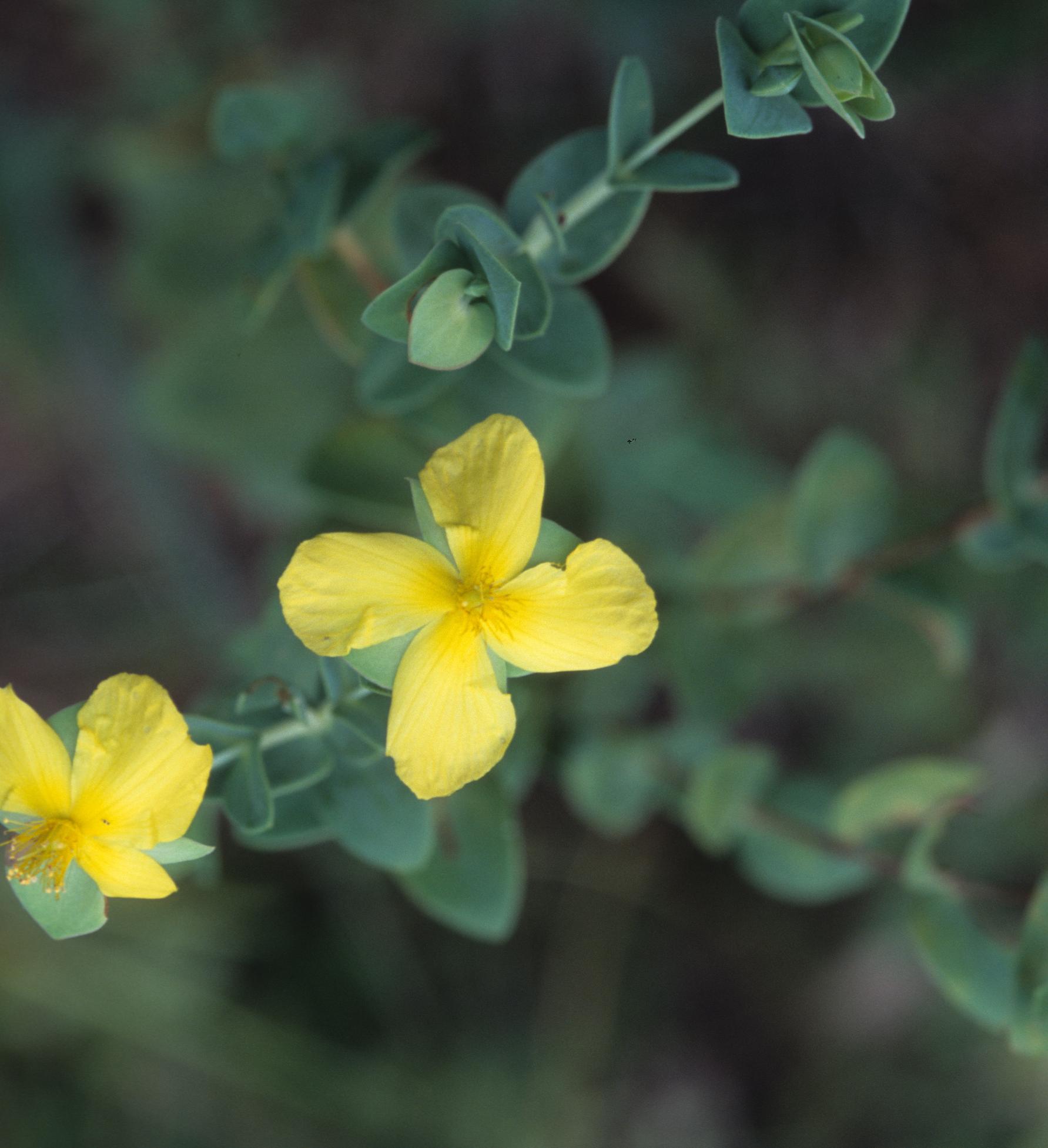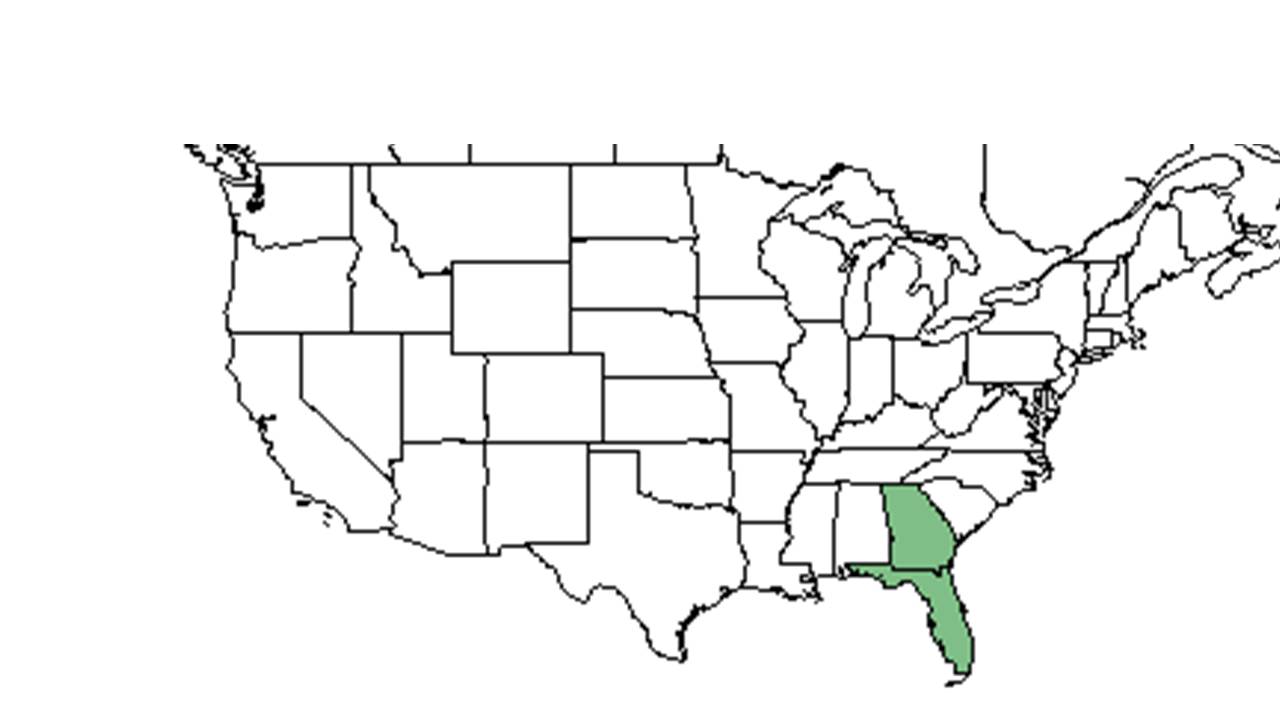Hypericum tetrapetalum
| Hypericum tetrapetalum | |
|---|---|

| |
| Photo taken by Gil Nelson | |
| Scientific classification | |
| Kingdom: | Plantae |
| Division: | Magnoliophyta - Flowering plants |
| Class: | Magnoliopsida – Dicotyledons |
| Order: | Theales |
| Family: | Clusiaceae ⁄ Guttiferae |
| Genus: | Hypericum |
| Species: | H. tetrapetalum |
| Binomial name | |
| Hypericum tetrapetalum (L.) Crantz | |

| |
| Natural range of Hypericum tetrapetalum from USDA NRCS Plants Database. | |
Common name: Fourpetal St. John's-wort
Contents
Taxonomic notes
Synonyms: Ascyrum tetrapetalum (Lamarck) Vail.[1]
Varieties: none.[1]
Description
H. tetrapetalum is a slender plant, usually with few branchings. [2] As its name implies, this species has a tetramerous calyx and corolla. [2]
“Usually glabrous herbs or shrubs. Leaves usually punctate, simple, opposite, entire, usually sessile or subsessile, exstipulate. Inflorescence basically cymose; flowers perfect, regular, bracteates, subsessile or short-pedicellate, sepals 2, 4, or 5, persistent; petals 4 or 5, usually marcescent, yellow or pink; stamens 5-numerous, separate or connate basally forming 3-5 clusters or fascicles, filaments usually persistent; carpels 2-5, stigmas and styles separate or fused, ovary superior, 1-locular or partly or wholly 2-5 locular, placentation axile or parietal. Capsules basically ovoid, longitudinally dehiscent, styles usually persistent; seeds numerous, lustrous, areolate, cylindric or oblong. In general our species form a polymorphic complex with many intergrading taxa.” [3]
Distribution
Ecology
Habitat
H. tetrapetalum occurs in wet sandy soils, like those of wetland woodlands, mesic flatwoods, or the margins of Karst ponds. [2] It can also occur in disturbed areas like roadsides. [2] Associated species include Pinus palutris, Hypericum microsepalum, and Serenoa repens. [2] Also include gallberry. [2]
Hypericum tetrapetalum is an indicator species for the Central Florida Flatwoods/Prairies community type as described in Carr et al. (2010).[4]
Phenology
This species is recorded in the FSU Herbarium specimens as flowering in August, but in peninsular Florida it can bloom throughout the year.[5] In north Florida H. tetrapetalum has been observed flowering in July and December.[6]
Pollination
The following Hymenoptera families and species were observed visiting flowers of Hypericum tetrapetalum at Archbold Biological Station: [7]
Halictidae: Augochlorella aurata, Augochloropsis metallica, Lasioglossum coreopsis, L. miniatulus
Megachilidae: Megachile brevis pseudobrevis
Use by animals
Deyrup observed these bees on, but not necessarily pollinating, H. tetrapetalum: Augochlorella aurata, Dialictzcs coreopsis, D. lniniatulusi.[8]
Conservation and management
Cultivation and restoration
Photo Gallery
References and notes
- ↑ 1.0 1.1 Weakley, A.S. 2015. Flora of the southern and mid-atlantic states. Working Draft of 21 May 2015. University of North Carolina at Chapel Hill, Chapel Hill, North Carolina.
- ↑ 2.0 2.1 2.2 2.3 2.4 2.5 Florida State University Robert K. Godfrey Herbarium database. URL: http://herbarium.bio.fsu.edu. Last accessed: June 2014. Collectors: R. A. Norris, Robert K. Godfrey, Steve L. Orzell, and Cecil R Slaughter. States and Counties: Florida: Alachua, Leon, Osceola, and Wakulla. Georgia: Camden and Clinch.
- ↑ Radford, Albert E., Harry E. Ahles, and C. Ritchie Bell. Manual of the Vascular Flora of the Carolinas. 1964, 1968. The University of North Carolina Press. 709. Print.
- ↑ Carr, S.C., K.M. Robertson, and R.K. Peet. 2010. A vegetation classification of fire-dependent pinelands of Florida. Castanea 75:153-189.
- ↑ Jason Sharp post to Florida Botany with image of flowering plant, 1 FEB 2016
- ↑ Nelson, G. PanFlora: Plant data for the eastern United States with emphasis on the Southeastern Coastal Plains, Florida, and the Florida Panhandle. www.gilnelson.com/PanFlora/ Accessed: 12 DEC 2016
- ↑ Deyrup, M.A. and N.D. 2015. Database of observations of Hymenoptera visitations to flowers of plants on Archbold Biological Station, Florida, USA.
- ↑ Deyrup, M. J. E., and Beth Norden (2002). "The diversity and floral hosts of bees at the Archbold Biological Station, Florida (Hymenoptera: Apoidea)." Insecta mundi 16(1-3).